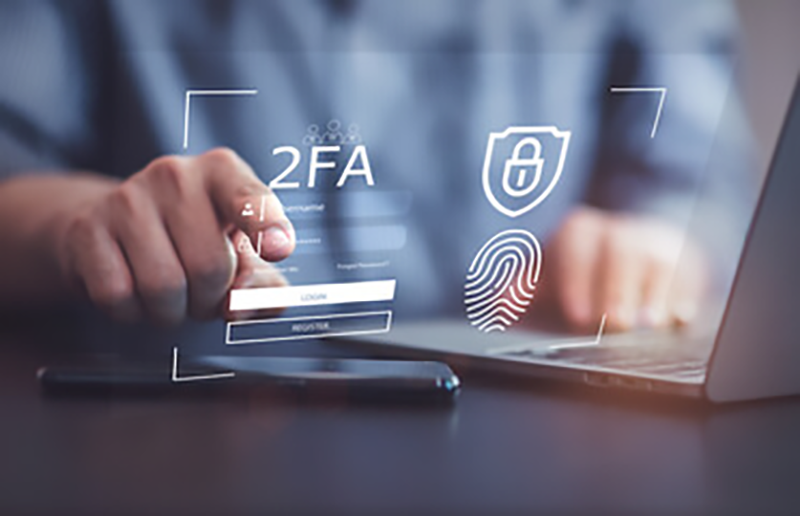Malware-based threats surged by 30% in the first half of 2024 compared to the same period in 2023, according to SonicWall’s 2024 Mid-Year Cyber Threat Report.1
One factor driving this increase is the rise of DIY (Do-It-Yourself) malware kits, which allow almost anyone—even those with limited technical skills—to create malicious software.
Cybercriminals use these kits to build malware without having to write complex code from scratch.
Here’s how they work.

How Do You Get DIY Malware?
You can find DIY malware kits on underground forums, dark web marketplaces, or even certain hidden websites. These kits are often sold by more experienced hackers. Some kits are even shared for free to attract new threat actors into the community.
Once you find one, downloading and using it usually doesn’t require advanced knowledge. These kits come with easy-to-follow instructions. Some even have point-and-click interfaces, similar to regular software. This makes it simple for you to customize the malware, like changing its appearance or deciding how it behaves once it infects a computer.
How Do Cybercriminals Build DIY Malware Kits?
Experienced hackers or groups of cybercriminals build these kits. They create the core malware code and then design the kit to be user-friendly.
Here’s how they usually go about it:
- Develop The Core Malware – First, they create the base malware, which could be Ransomware or any other type of malicious program. This part requires strong programming skills.
- Add Customization Features – After creating the base code, they add features that let users tweak the malware. This might include options for spreading the malware or choosing specific targets. You could decide whether it steals passwords or locks files.
- Create An Interface – To make it easy to use, the hackers build a simple interface—like a menu or dashboard—that allows you to select different features without needing to know any coding.
- Offer Support – Some kits even come with customer service! The creators may offer guides, tutorials, or even tech support to help you use their product successfully.
DIY malware kits lower the barrier to creating harmful software, which makes it easier for more people to engage in cybercrime. Verizon reported that over 70% of all system intrusion breaches involve malware. This means that malware is one of the leading tools used by attackers to break into systems—a key factor in most cybersecurity breaches.
Common Types Of DIY Malware
When you think about DIY malware, it’s helpful to know the most common types that you might come across. Here are some of the most common ones:
1. Ransomware
Ransomware is one of the most dangerous types of malware. It locks up your computer or files and demands money (a ransom) to unlock them. With DIY Ransomware kits, you can customize how the malware spreads and what kind of ransom message appears. You might even decide the amount of money to ask for and whether to accept payments in cryptocurrency like Bitcoin.
2. Spyware
Spyware secretly collects information from someone’s device without them knowing. DIY spyware can gather things like passwords, personal messages, or even bank details. Some types even let you watch someone’s screen or track what they do online in real-time. This can also lead to other attacks, like phishing or ransomware.
3. Trojans
A Trojan looks like a harmless program but hides malicious code inside. Once someone downloads and runs the program, it infects their computer. DIY Trojan kits let you create fake programs that look legit but actually steal data or give you access to the victim’s device. Trojans account for 58% of malware attacks.
4. Adware
Adware floods a user’s device with unwanted ads. DIY adware kits make it easy for you to create malware that forces ads to pop up constantly. The goal here is often to make money through clicks or to overwhelm the user’s system with ads.
5. Botnets
A botnet is a network of infected devices controlled by a hacker. With DIY botnet kits, you can infect multiple computers or devices and use them for large-scale attacks, like sending out spam or launching Distributed Denial of Service (DDoS) attacks that crash websites.
6. Keyloggers
Keyloggers record every key someone presses on their keyboard. You can use DIY keylogger kits to capture things like usernames, passwords, and private messages. Once the keylogger is installed on a device, it sends the collected data back to you.
7. Rootkits
Rootkits are designed to hide the presence of other malware on a device. You can use DIY rootkit kits to help disguise more dangerous malware, making it harder for antivirus software to detect the infection.
8. Worms
Worms are malware that spreads across networks without requiring user action, like clicking a link or opening a file. DIY worm kits let you create programs that automatically move from one device to another, which causes widespread infections. In 2022, worm malware was blocked nearly 206 million times.
While this isn’t an exhaustive list, knowing these common types will help you get a clearer picture of the different ways cybercriminals can use these DIY kits to carry out attacks.
How To Stay Safe From Malware?
Staying safe from malware doesn’t have to be complicated. With a few habits, you can protect yourself and your devices from malicious software. Here are some key steps to help you avoid getting infected:
1. Consistently Update Your Software
Outdated software is one of the easiest ways for malware to get into your system. Hackers often exploit weaknesses in old software to sneak malware in. Regularly updating your operating system, apps, and programs closes these security gaps. Most devices and programs can update automatically, depending on your settings.
2. Be Careful With Email Attachments
Malware often hides in email attachments or links, especially in phishing emails. If you get an email from someone you don’t know, be cautious. Never open attachments or click on links unless you’re sure they’re safe. Even if the email looks like it’s from a trusted source, double-check the sender’s address. Phishing emails often look legit but are designed to trick you.
3. Use Strong & Uncommon Passwords
Weak passwords make it easier for hackers to break into your accounts. Use long, unique passwords for each of your accounts, combining letters, numbers, and symbols. It’s a good idea to use a password manager to help you remember your passwords and generate strong ones. Stop using obvious character strings like “1234” or “password.”
4. Enable Two-Factor Authentication (2FA)
2FA adds an extra layer of protection to your accounts. Even if a hacker steals your password, they can’t get in without a second form of verification—like a code sent to your phone or email. Whenever possible, turn on 2FA for your accounts, especially for important ones like banking or email.
5. Be Careful When Downloading Files
Only download files from trusted websites or sources. Malware can hide in seemingly harmless downloads like free software, movies, or music. If a website looks sketchy or too good to be true, it’s probably best to avoid downloading anything from it.
6. Don’t Click On Random Pop-Ups
Pop-up ads can sometimes trick you into downloading malware. If a pop-up appears saying you’ve won a prize or that your computer is infected, don’t click on it. Close the pop-up immediately or use your antivirus software to scan for any potential threats.
7. Use A VPN On Public Wi-Fi
Public Wi-Fi networks (like those in cafes or airports) are often not secure. Hackers can easily intercept your data on these networks. If you have to use public Wi-Fi, consider using a Virtual Private Network (VPN). A VPN encrypts your data, making it harder for hackers to see what you’re doing online.
8. Regularly Backup Your Data
Regularly backing up your data is essential. In case malware like Ransomware locks you out of your files, having a backup means you won’t lose important data. Use an external hard drive or a cloud service to store backups of your files, and make sure you do it often.
9. Use End Point Detection & Response (EDR)
2Secure team recommends using EDR because it helps quickly identify and stop threats like ransomware, data theft, and social engineering attacks. This means you get better protection and faster responses to possible attacks, keeping your data and system more secure.
10. Pay Attention to Warnings
Your browser or operating system might warn you if you’re about to visit a suspicious website or download a dangerous file. Don’t ignore these warnings. They’re there to help you avoid malware. If you get a warning, it’s better to leave the site or cancel the download.
It’s all about being cautious and using tools to protect your personal and business data.

FAQ
What Can A Hacker Do With DIY Malware?
With DIY malware, a hacker can steal your personal information, lock your files for ransom, spy on your online activity, or take control of your device. They can also use your computer to spread malware to others or launch large-scale attacks, all without needing advanced technical skills.
How Does Malware Target Businesses?
Hackers target businesses through phishing emails, infected websites, or weak passwords. Hackers may also exploit outdated software or security gaps in a company’s system. Once inside, they can steal data, demand ransom, or disrupt operations, risking your business.
What Is An Example Of A DIY Malware?
An example of DIY malware is a Ransomware kit. With it, you can create malware that encrypts someone’s files and demands money to decrypt them. The kit usually includes simple tools that let you customize the ransom message and choose how the malware spreads without advanced coding skills. Conducting a Ransomware attack simulation can help protect your business by identifying weaknesses in your security measures and improving your response plan before a real attack occurs.
What Should You Do If Your Computer Is Infected With Malware?
If your computer is infected with malware, disconnect it from the Internet to prevent further damage. Run a full scan with your antivirus or anti-malware software to remove the malware. 2Secure team recommends asking for professional assistance if the problem persists and changing your passwords to protect your accounts.

Source:
- (2024). Sonicwall.com. https://www.sonicwall.com/threat-report




